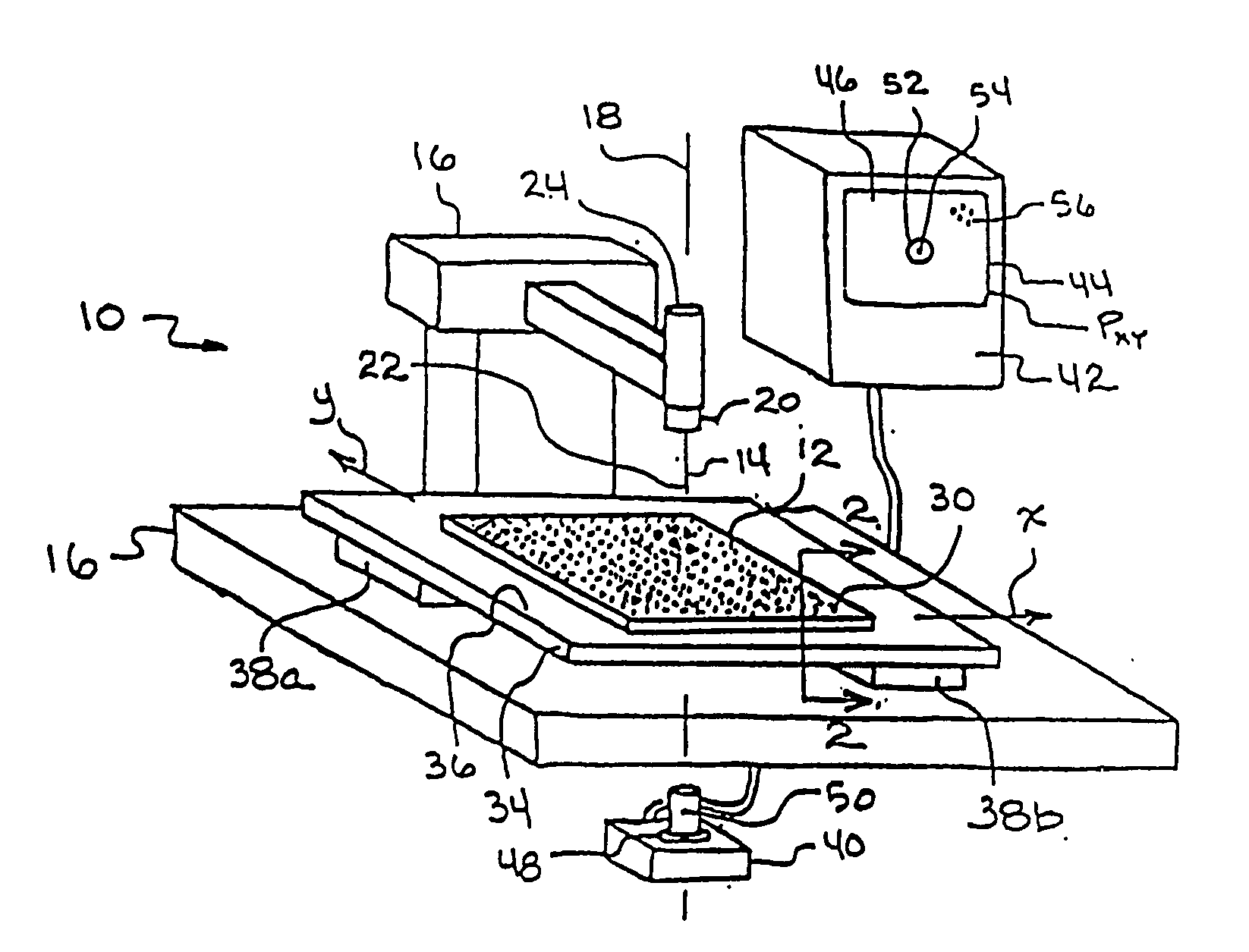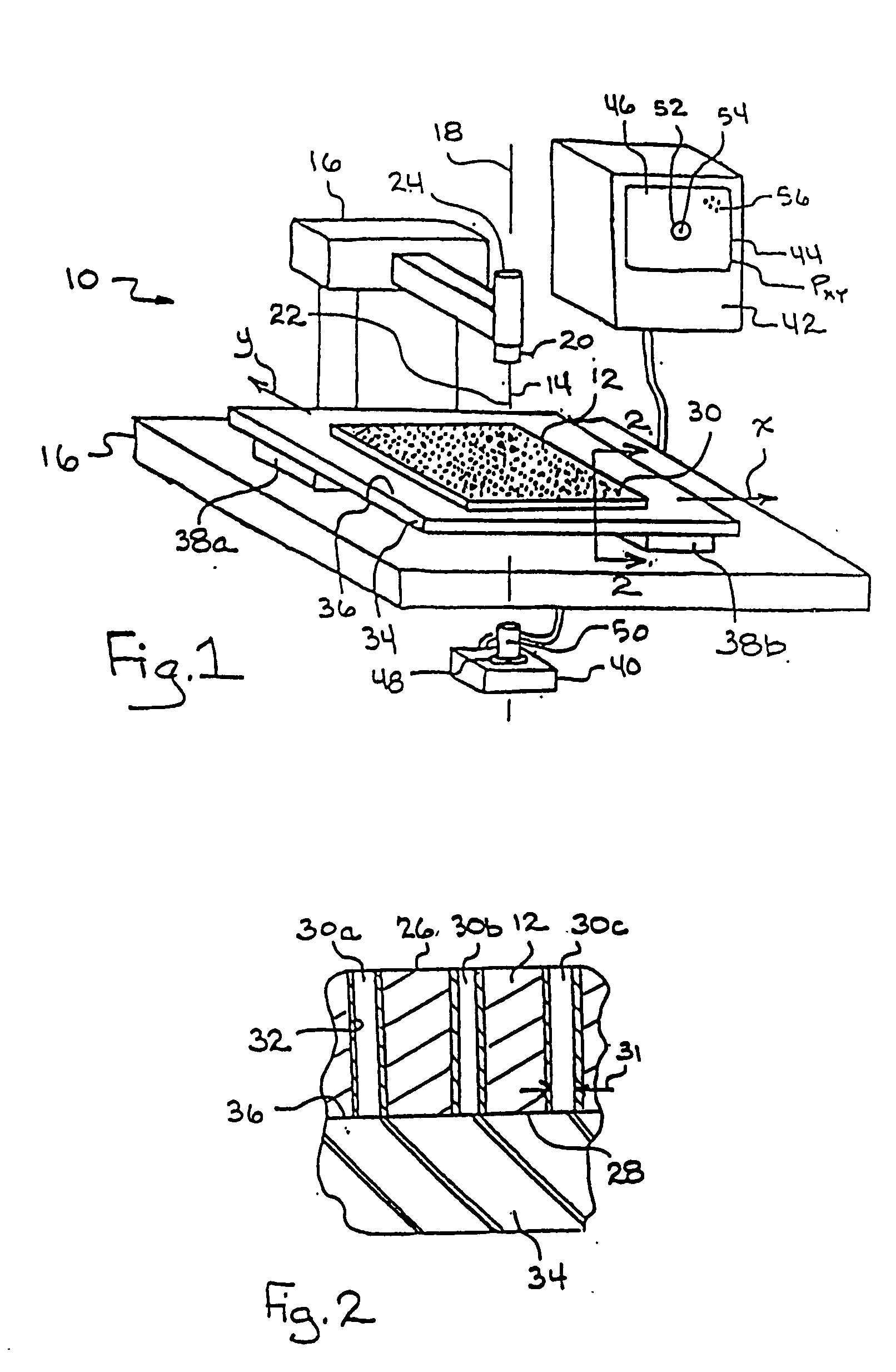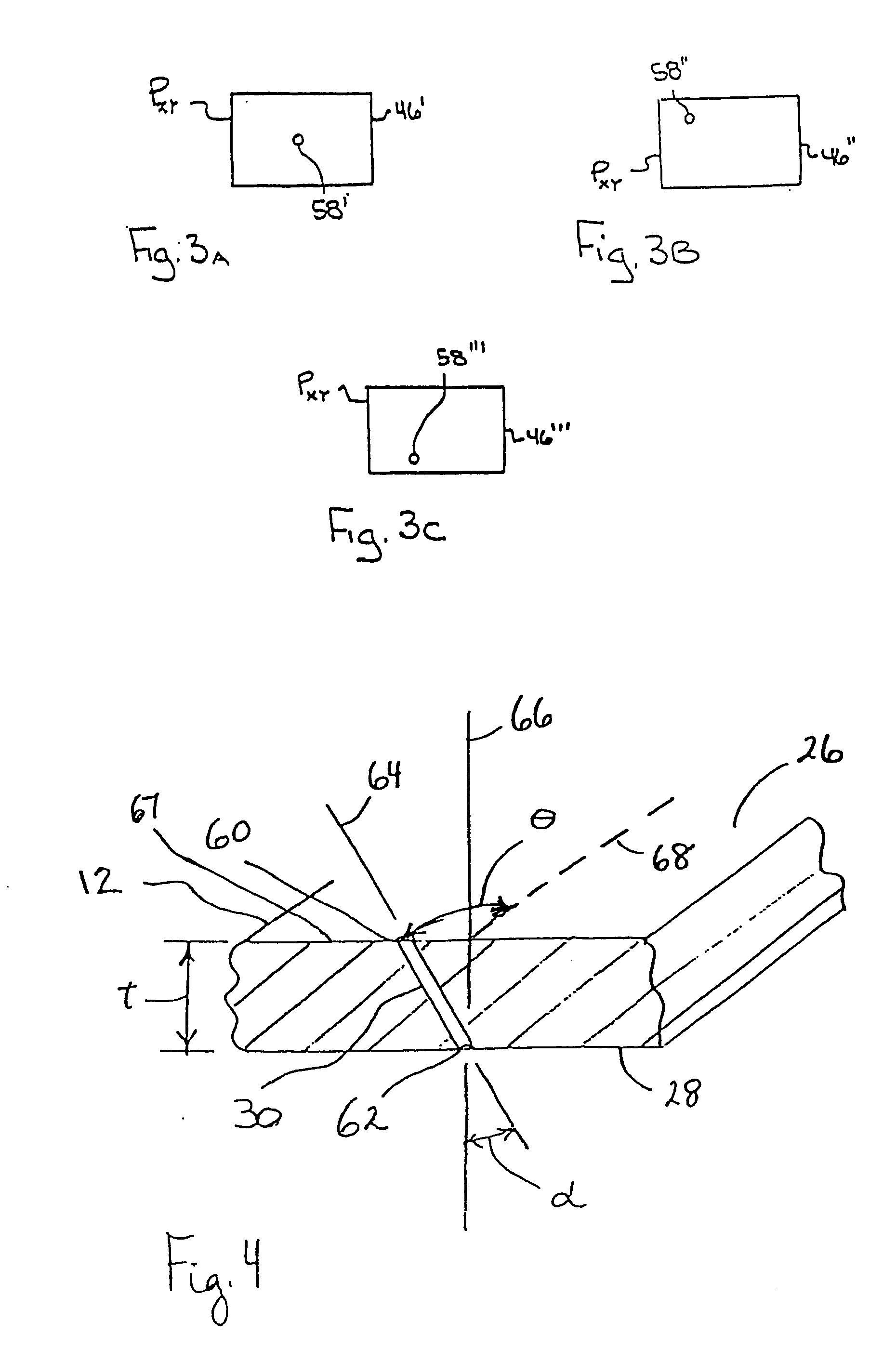Positioning system for moving a selected station of a holding plate to a predetermined location for interaction with a probe
a technology of positioning system and holding plate, which is applied in the field of positioning system for moving a selected station of a holding plate to a predetermined location for interaction with a probe, can solve the problems of manual alignment of a selected station with a probe, and affecting the operation of the holding pla
- Summary
- Abstract
- Description
- Claims
- Application Information
AI Technical Summary
Benefits of technology
Problems solved by technology
Method used
Image
Examples
Embodiment Construction
[0022] Referring initially to FIG. 1, a system 10 for performing operations on selected samples in a holding plate 12 with a probe 14 in accordance with the present invention is shown. As shown, the system 10 includes a base 16 for supporting both the holding plate 12 and the probe 14. As further shown, the probe 14 is preferably elongated and defines a probe axis 18 in the direction of elongation. In the preferred embodiment of the present invention, the probe 14 is formed as a hollow needle having a lumen capable of transferring fluid. Also shown in FIG. 1, the elongated probe 14 is preferably mounted on a hub 20 and extends from the hub 20 to a probe tip 22. For the present invention, the hub 20, which is preferably fluorescent, is somehow optically distinguishable from the probe 14. The system 10 also includes a mechanism 24 to move the probe 14 back and forth along the probe axis 18, relative to the base 16 and holding plate 12. Those skilled in the art will appreciate that any...
PUM
| Property | Measurement | Unit |
|---|---|---|
| Thickness | aaaaa | aaaaa |
| Angle | aaaaa | aaaaa |
| Fluorescence | aaaaa | aaaaa |
Abstract
Description
Claims
Application Information
 Login to View More
Login to View More - R&D
- Intellectual Property
- Life Sciences
- Materials
- Tech Scout
- Unparalleled Data Quality
- Higher Quality Content
- 60% Fewer Hallucinations
Browse by: Latest US Patents, China's latest patents, Technical Efficacy Thesaurus, Application Domain, Technology Topic, Popular Technical Reports.
© 2025 PatSnap. All rights reserved.Legal|Privacy policy|Modern Slavery Act Transparency Statement|Sitemap|About US| Contact US: help@patsnap.com



